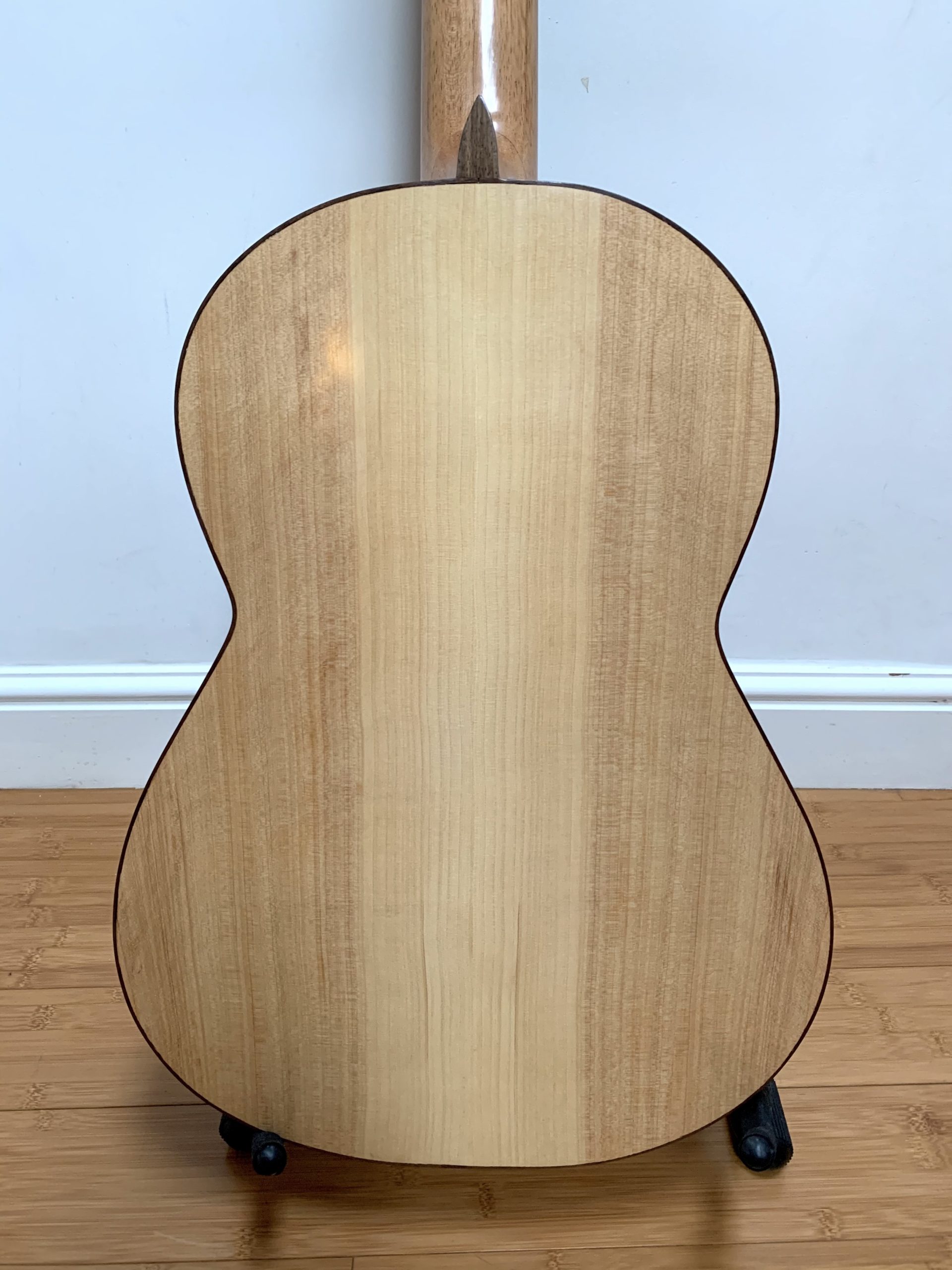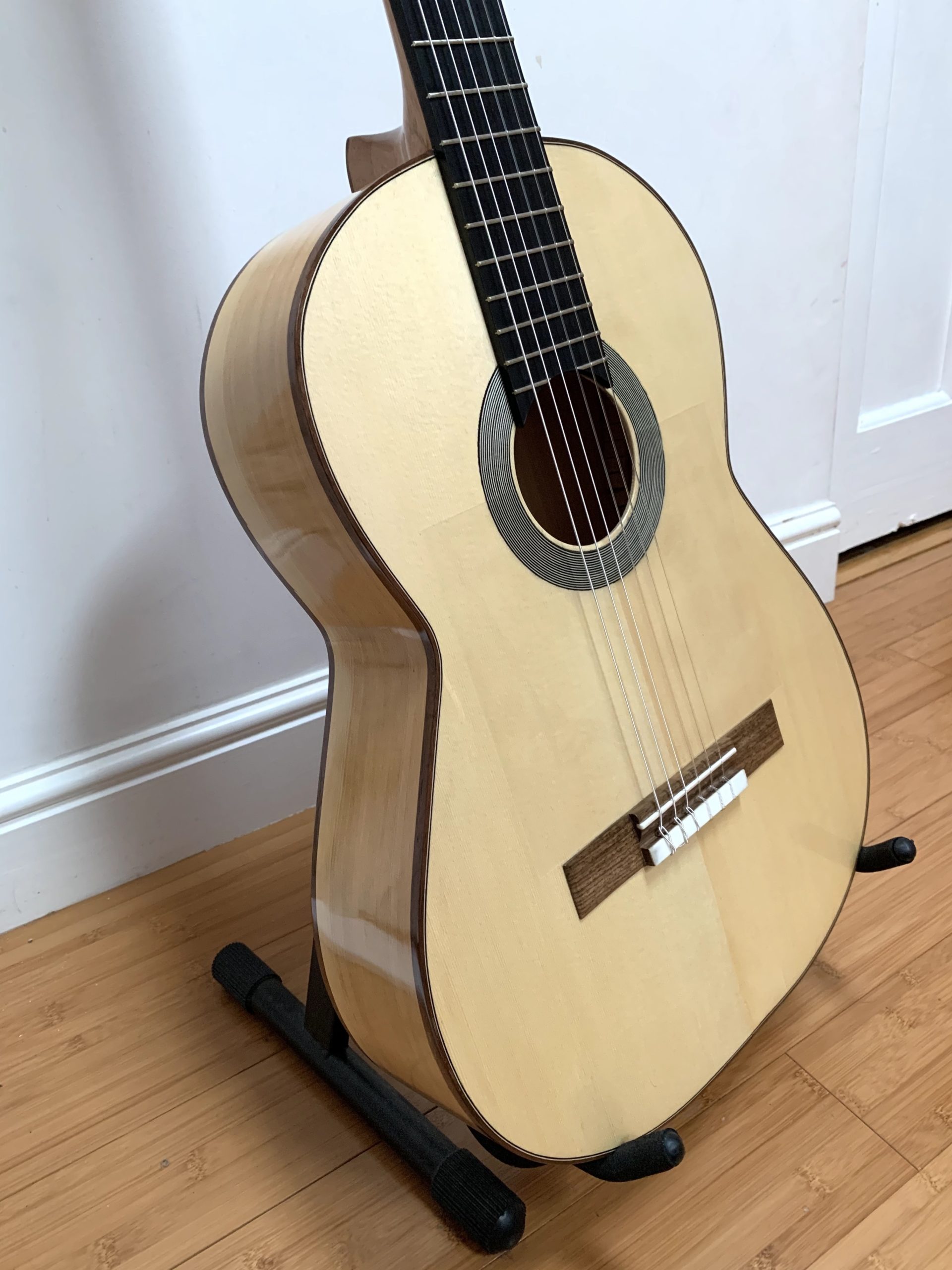







I finished making my fourth guitar just a couple of days before Christmas. It is, in many respects, very much like the previous two. It’s based on the same Barbero plan, has Cypress back and sides, and this time a European spruce top and walnut for the bridge, head veneer and bindings. It’s 650mm scale rather than 660mm. I built it for a friend, Andy, who heard guitar #3 and wanted one like it. The only instructions I received from Andy were to use mechanical pegs (I opted for Wittner pegs) and that he liked the square head shape of my previous two guitars.
Overall, I am pleased with the outcome as it is very consistent with guitar #3. The air resonance of #4 is 90.3Hz (F#-42 cents) compared to 90.2Hz (F#-44 cents) of #3, and the weight is 1247g compared to 1189g of #3. The mechanical tuners weigh an additional 34g over the ebony turners used on #3, so taking that into account, the overall total weight difference is just 24g.
I used hide glue for the first time which was difficult at first but became easier as I got used to it. It gels very quickly and needs to stay quite runny (i.e. warm) to achieve coverage over large areas. I didn’t feel confident enough using it to joint the top and back, nor to glue the bridge with it after having french polished the guitar, but I’ll definitely continue to use it for certain tasks such as making the rosette and gluing the linings, purfling and binding, when the quick grab time is useful.
My workmanship is slowly improving. Throughout the build process, I’m often reminded of David Pye’s concept of the workmanship of risk vs. workmanship of certainty, whereby the use of jigs and machine tools can increase the the certainty of the outcome, compared to workmanship that relies more on hand tools, individual judgement and the maker’s skill and is therefore more risky. I work in a very free manner but a few more jigs and templates would be helpful and improve the accuracy of my work. When I interviewed luthiers in their workshops during the course of my research, it was very common to see a variety of jigs and a small number of machine tools. Machine tools are mainly used to reduce the labour required, whereas jigs improve the accuracy and consistency of the work. One of the reasons apprenticeships in lutherie are so rare is that machines have replaced the labour that apprentices used to be employed for. The labour time that I put into an instrument is of little consequence because I’m not trying to make money and I enjoy the physical and leisurely pace of work, but I do want to make some more jigs before I make the next guitar (which will also be a flamenco guitar for another Andy).
There was a point while making this guitar that I felt like I was achieving more autonomy in my work. I wasn’t constantly referring to the DIY books or previous notes quite so much and I am beginning to intuit what comes next in the process; not entirely – not like the luthiers I spoke to who have all the measurements in their head – but I’m experiencing a growing sense of taking the lead, rather than being led. As someone who only makes a couple of instruments a year, I think it will be a while before I fully embody the process of making.














